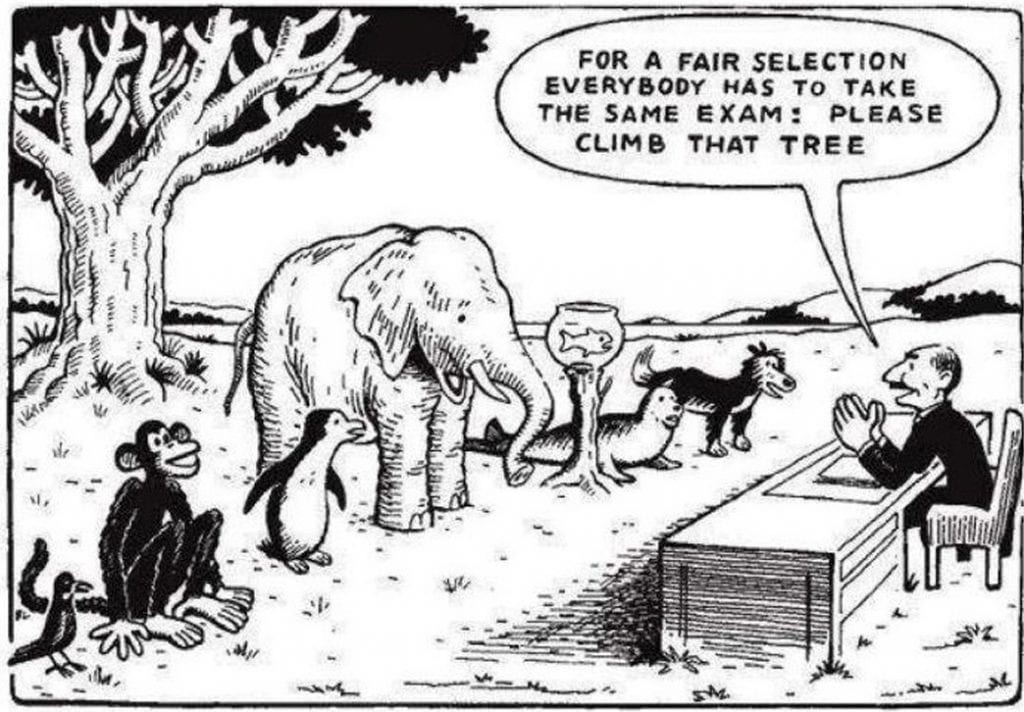| CLICK HERE FOR AN ADDITIONAL VIDEO |
Caste-based discrimination in India’s public schools contributes to significant inequity and often prevents students from maintaining their enrollment. India’s 2009 Right of Children to Free and Compulsory Education Act was put in place to ensure that all children received a basic primary education but lacks the structural support necessary to track each student causing those who are most marginalized to fall through the cracks. Additionally, India’s officials tend to ignore the harmful treatment that Dalit children experience in their classrooms.
[Source]According to the government, nearly half – over 80 million children – drop out before completing their elementary education.
Lower-caste students report heightened sexual, physical and verbal abuse in their classrooms. They frequently are segregated from other students and humiliated in front of their peers. Teachers are reported to contribute more to this issue than non-marginalized students with details of slurs, put downs and discouragement surrounding their ability to succeed in school. Religious or cultural differences are disregarded leaving students unable to successfully progress through school or meet similar targets to their peers. Although caste-based discrimination is technically illegal, for all intents and purposes such mistreatment remains commonplace in India.
[Source]
The children from Dalits – the former untouchables – tribals and Muslims, who face subtle or glaring discrimination, feel humiliated and hurt, and eventually they no longer want to attend. Dropping out makes them vulnerable to child labour and early marriages.
This degradation has direct consequences on educational outcomes and successes for marginalized children, often leading to early departures from school. This cycle of discrimination in the classroom has long term effects on student outcomes. They are intensely discouraged by their teachers and bullied to the extreme. In many cases, school acts as a method of changing societal status and the only opportunity a student may have to change their life circumstance. When they are driven out of school this chance to disrupt the cycle of poverty they were born into disappears.
[Source]
Education is considered a form of cultural capital that is crucial to social mobility. As research among Dalit youth show, many of them seek to overcome the stigma of caste by aspiring to education that will lead to occupations other than caste-based ones.
The economic results of this in Dalit communities are devastating as children remain entrenched in systems that keep them subordinated and prevent them from escaping poverty. Overall development in India is additionally stifled by the governments inability to successfully keep children in school and failure to address barriers to student success particularly those within lower-castes. While India celebrates the reduction of overall illiteracy and dropout rates, officials turn a blind eye to the caste discrimination that keeps certain students from ever achieving success.
[Source]
Obtaining a quality education is the foundation to creating sustainable development. In addition to improving quality of life, access to inclusive education can help equip locals with the tools required to develop innovative solutions to the world’s greatest problems.
India’s ability to achieve the UN Sustainable Development Goal, Quality Education, is unequivocally hindered by the continued discrimination of lower-caste peoples within the country. Tremendous efforts have been made to turn the tide socially but without concrete structural policy to back such efforts, there is no clear way to prevent mistreatment. Access to education is central to the achievement of interrelated human rights outcomes without which India cannot holistically progress. The continued degradation of groups of people based on caste prevents economic development and leaves great swaths of the country unable to contribute to development and in desolate poverty. Next steps are clear in the eyes of Human Rights Watch as the organization calls for India to do the following:
Develop clear indicators to detect and address discrimination in schools; lay out appropriate disciplinary measures.Create a system to track every child from enrollment through completion of grade VIIITrain teachers to develop methods for greater interaction among children of varied socio-economic and caste backgrounds.
As a western identified person, my perspectives into this situation are hindered by lack of lived experience surrounding caste. Caste holds an important historical role in Indian society and is tied closely with religion. Critiques of this system must be filtered through a ‘cultural relativist’ lens to ensure that the idea of so called ‘universalist’ thinking doesn’t only take into account dominant western ways of knowing. Despite the consideration of the cultural aspects of caste-based discrimination, in this case, the governments abolition of caste and their legal attempts to prevent discrimination show that the abolition of such practices is called for both internally in India and externally by the UN. The universal human rights agenda of the UN certainly has its issues, taking culture into account is an imperative component of understanding local practice in any country and calling certain things universal can run the risk of discounting nuance. With that being said, the act of defining and calling for countries to uphold universal human rights provides people with the language and authority to stand up and demand the treatment they feel that they deserve.
Citations:
“Campaign and New Report Highlight Caste Discrimination in Schools.” International Dalit Solidarity Network, 9 Oct. 2017, idsn.org/campaign-new-report-highlight-caste-discrimination-abuse-schools/.
“Caste Discrimination Keeps Dalit Children from Schools.” Video Volunteers, 13 Aug. 2017, www.videovolunteers.org/caste-discrimination-keeps-dalit-children-from-schools/.
“India: Marginalized Children Denied Education.” Human Rights Watch, 23 June 2015, www.hrw.org/news/2014/04/22/india-marginalized-children-denied-education.
Sharma, Betwa. “’Rampant Discrimination’ in India’s Schools.” Al Jazeera, Al Jazeera, 22 Apr. 2014, www.aljazeera.com/indepth/features/2014/04/discrimination-india-schools-2014422123039276470.html.

